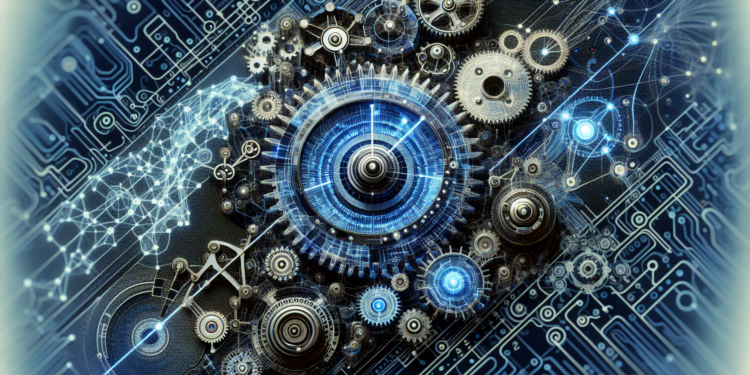Contemporary Artificial Intelligence (AI) is advancing by leaps and bounds, and one of the concepts that has gained prominence in academic dialogue and in the practical implementation of stochastic neural networks are the Boltzmann Machines (BM). The significance of these networks lies in their ability to learn complex internal representations and discover intricate correlations within large volumes of unlabeled data.
Theoretical Foundations ##
Originating from statistical physics, Boltzmann Machines are named after the physicist Ludwig Boltzmann. To understand the underlying mechanism, it is essential to become familiar with the concept of a system’s energy. In the context of BMs, “energy” refers to a scalar function related to the network’s state, drawing an analogy with the physical concept describing how certain configurations of a system are more likely due to their lower energy.
Technically, BMs are structured with neuronal units that form a fully connected network. Practically, this means that each neuron is connected to all others. Each connection has an associated weight that determines the strength and influence between units. Neurons can be in one of two states: active or inactive, commonly represented by the values 1 and -1, or 1 and 0 in binary representations.
Algorithms and Learning ##
The learning process in BMs involves adjusting synaptic weights to minimize the system’s energy. This adjustment is often made using an algorithm called Contrastive Divergence (CD), proposed by Geoffrey Hinton. CD is an approximation method that allows the network to update its weights to efficiently learn the probability distributions of the observed data.
A distinctive feature of BMs is their stochastic nature. Instead of deterministic activations, they use a probabilistic activation function based on the logistic distribution derived from Boltzmann physics, making them particularly suited for modeling data distributions with a large number of local modes or for discovering hidden structures in the data.
Practical Applications ##
Currently, the applications of Boltzmann Machines are vast and varied. However, they are particularly useful in areas of pattern recognition and unsupervised learning, such as the reconstruction of damaged images or product recommendations based on hidden consumption patterns.
One of the best-known variants of BMs is the Restricted Boltzmann Machine (RBM), where structural constraints simplify learning and computational efficiency, enabling the training of deeper networks, known as Deep Belief Networks (DBN).
Innovations and Future ##
Looking forward, the evolution of Boltzmann Machines contemplates integration with new optimization techniques and deep learning, as well as the possibility to operate in conjunction with more extensive AI systems, in an effort to improve not only the accuracy but also the models’ generalization capability.
Researchers continue to explore ways to overcome limitations in terms of scalability and computational efficiency, with recent advancements in parallel algorithms and specialized hardware approximations, such as Field-Programmable Gate Arrays (FPGAs) or even quantum computing, which could provide the necessary power to unlock the full potential of BMs.
Industry Feedback ##
Opinions from experts in the world of AI about Boltzmann Machines vary. While some professionals highlight their theoretical utility and their role in advancing the understanding of complex neural networks, others emphasize the practical challenges involved in their implementation in real and large-scale scenarios.
A recent case study exemplifying the use of BMs is in the analysis of biomedical data, where they have been used to identify hidden patterns in genetic data, providing doctors with additional tools for diagnosis and treatment personalization in complex diseases like cancer.
Conclusion ##
The study and application of Boltzmann Machines symbolize the relentless search for AI models that not only process data on a massive scale but also decipher and leverage the subtle statistical patterns underlying it. As the challenges associated with their complexity and computation are overcome, their application could be revolutionary in fields as diverse as robotics, personalized medicine, and advanced recommendation systems.
In essence, Boltzmann Machines are not merely machine learning structures; they represent a cornerstone in the contemporary understanding of neural networks and possess immense potential to be a driving force in innovation within the exciting field of Artificial Intelligence.






















